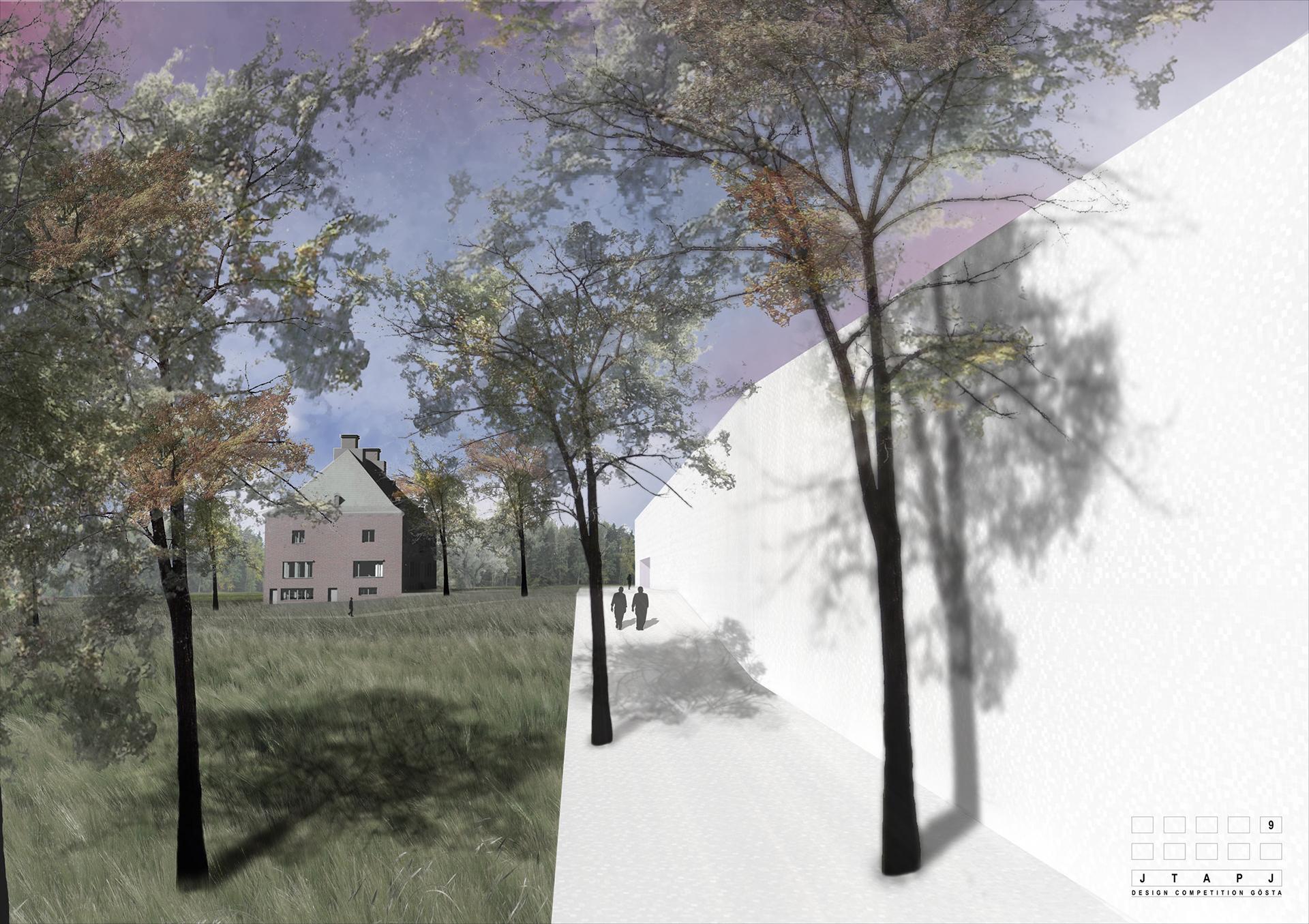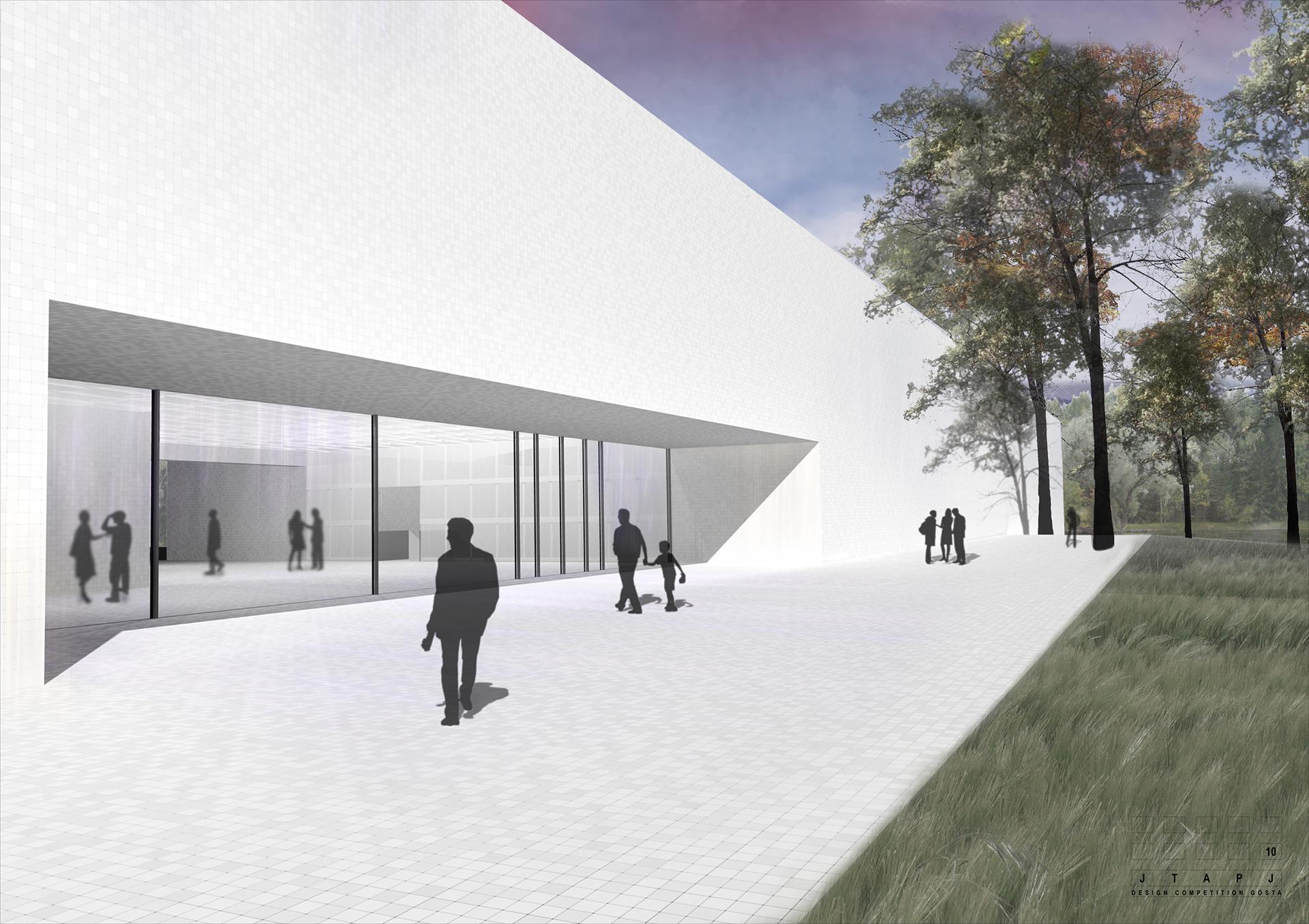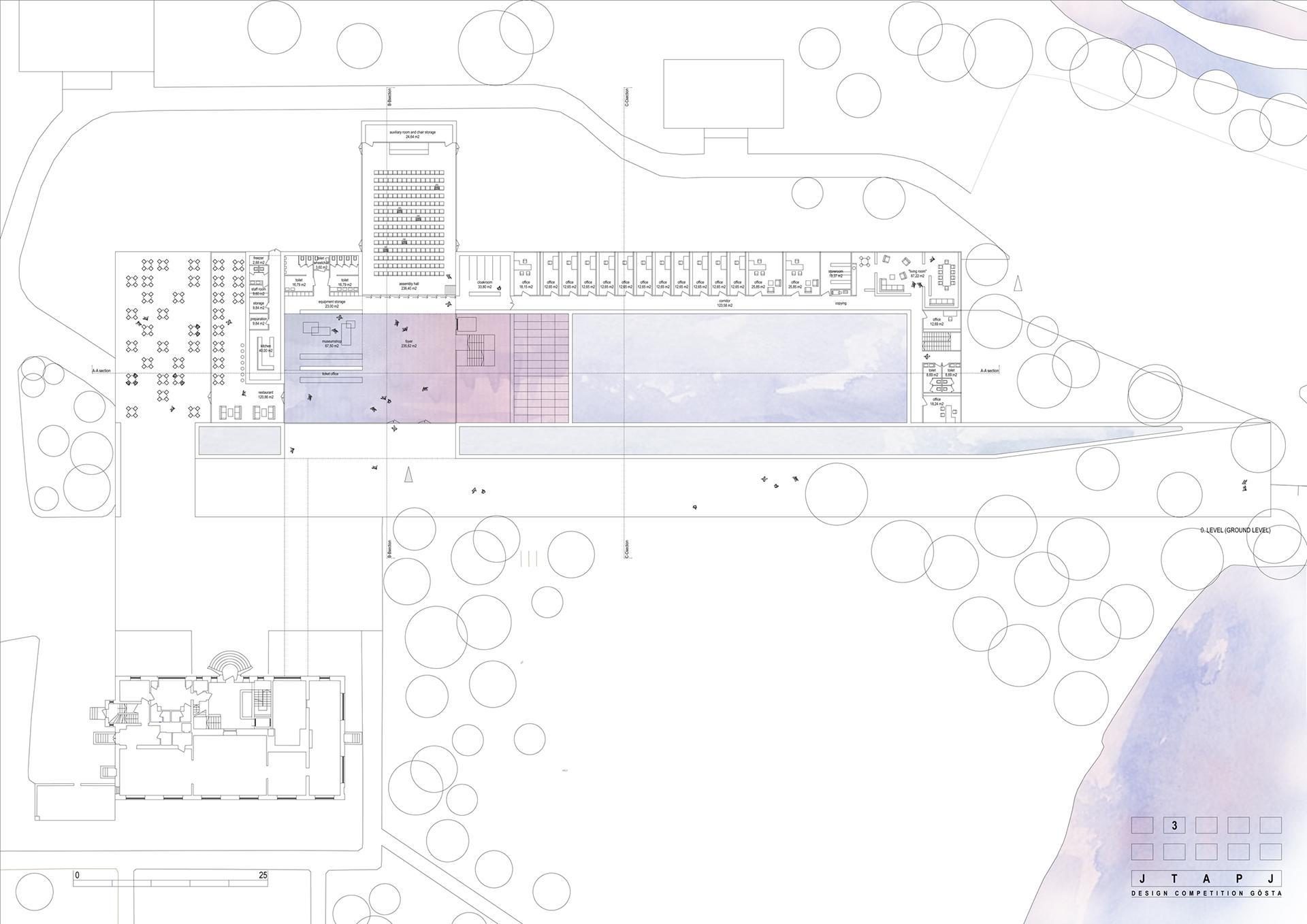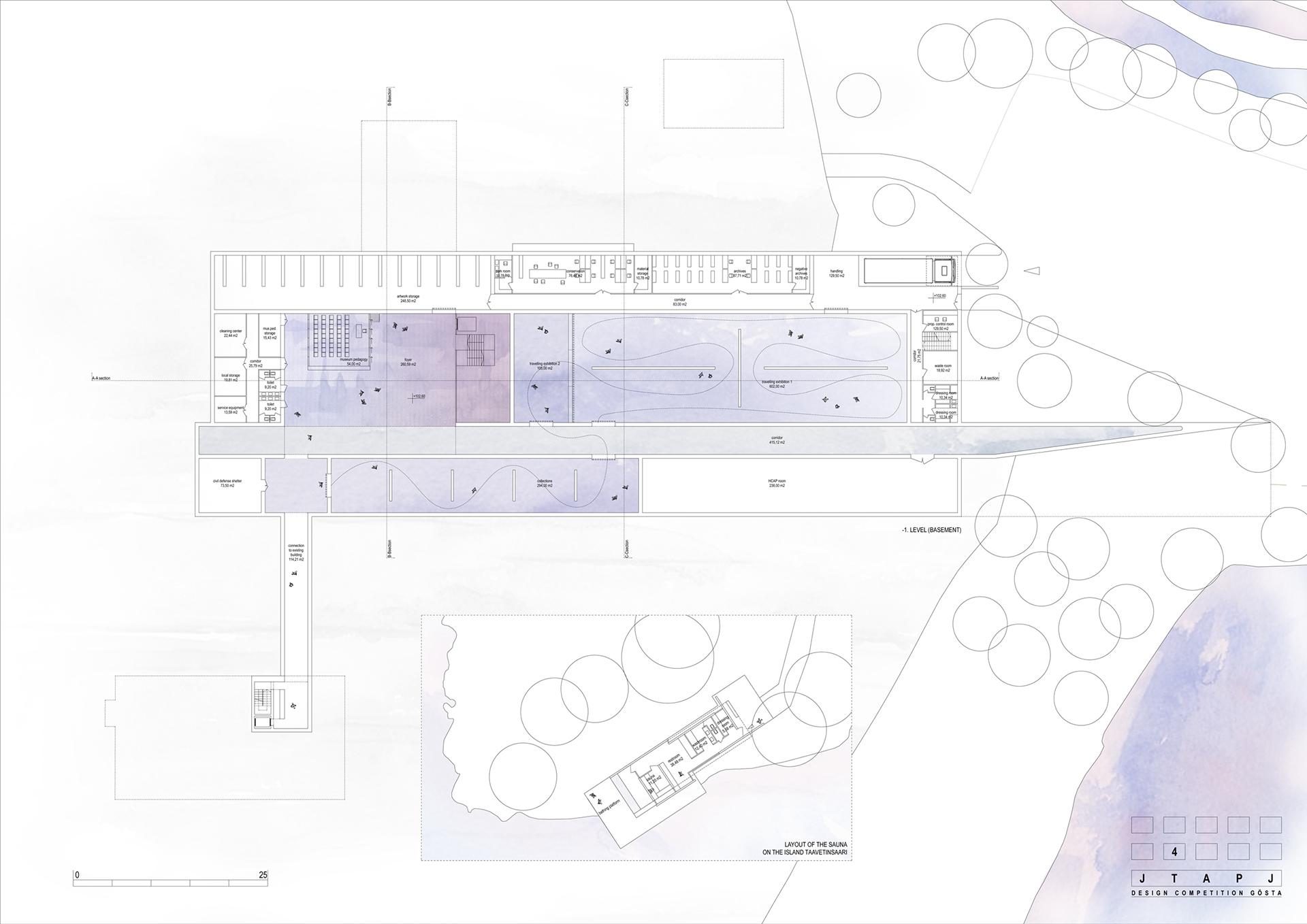Gösta is a Finnish Museum of Art. Our entry for the competition to design an extension for the museum focuses on the road leading to the location. The road is depicted as a sculpture and also as a venue of a permanent exhibition that shows the Finnish landscape, nature, the park and the surrounding monuments and historic buildings. The new building of the museum is positioned as a neutral yet modern module that follows the line of the road.
One of our most beloved design is the concept we entered the Competition for the extension of Gösta Museum with. Our studio frequently takes part in competitions. In this case both the stunning location and the exciting cultural function were tempting us to enter the competition. The location of the project is 100 kms north west from Tampere at the Finnish Lakelands.
The museum and the surrounding park originally belonged to Gösta Serlachius, an industrialist whose private residence was situated in the current museum building. Gösta Serlachius (1876-1942) was the owner of one of the biggest paper factories in Finland in the early years of the 20th century. At the same time he was also an ardent supporter of art and he was a renowned arts collector too. The foundation that was named after him was established in 1933 in order to maintain the collection of Finnish masterpieces known as the Serlachius collection. Currently the foundation is not only responsible for the maintenance and development of the collection but it also organises exhibitions and cultural programmes in the museums.

In 2011 an international competition to extend Art Museum Gösta was organised by Serlachius Art Foundation. The competition attracted 579 submissions thus making it the largest architectural design competition in Finland ever. Although our studio was not among the winners, we are still proud of our entry design and also to have been able to compete with such prestigious colleagues.
Art Museum Gösta is situated a few kilometres west from the city of Mänttä, right on the bank of Lake Melasjärvi. The museum is positioned on top of hill with a stunning view over the tiny island of Taavetinsaari. In the beautifully kept park of the former residence the works of Finnish sculptures are on display.

Our studio intended to keep the structure of the park and the surrounding small buildings and at the same time highlight the already existing museum building and the stunning panorama.
Our concept of extension was to be neutral and modern at the same time. We focused mainly on the pathway leading towards the manor that connects the parking area and the small square in front of the old museum building. We planned the pathway with an „L” intersection – in other words the pavement and the joining vertical wall was designed as an integrated composition. The building itself was positioned behind this shape.

The lengthy volume of the new building of the museum is fitted into the landscape and almost invisibly accompanies the pathway, blends in with it. The gaze of the visitors at the meantime is focusing on the scenery, the island, the lake, the park and the old museum building.
This is how the pathway becomes an exhibition space, a venue for a permanent exhibition. There is a wide entry zone from the path into the new building. The hall, the exhibition and community areas were positioned parallelly with the path. On the ground level and the -1 level there are airy public and museum spaces that are lit from sideways and from above. Behind these are the servicing functions, offices and warehouses. Through the glass walls of the restaurant we can see the park that connects very well with the small square in front of the old museum building. We planned an underground corridor to link the old and the new buildings of the museum.
Project info
- Project Name Architectural Competition Plan for Art Museum Gösta
- Location Mänttä, Finnland
- Gross Area 5 000 m2
- Project Year 2011
- Tender Gösta Serlachius Arts Foundation
- General Design BORD Architectural Studio
- Head Architect Peter Bordas
- Architect Team Robert Benke, Annamaria Holovits, Julia Szendroi, Tamas Tolvaj




